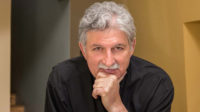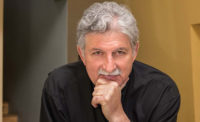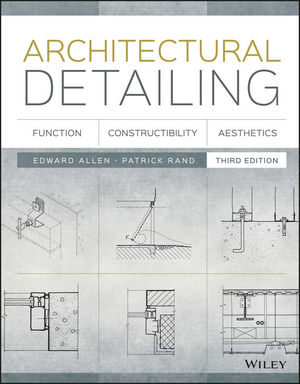Newsmaker: Edward Mazria
The Architecture 2030 founder and recent Purpose Prize winner speaks with Architectural Record about being a green building pioneer and how he's faring in his mission to make all buildings carbon-neutral.
 |
| Photo © Civic Ventures |
| Edward Mazria, a sustainable design pioneer, recently won a $100,000 Purpose Prize. |
This month, Edward Mazria and his crusade to “greenify” the built environment got a major boost: the 70-year-old architect was named one of five winners of the Purpose Prize. The $100,000 award is given by Civic Ventures, a baby-boomer-focused think-tank in San Francisco that aims to promote innovative, socially responsible work among people of retirement age. Mazria received the accolade for his decades spent furthering ecologically attuned building practices, including founding the nonprofit organization Architecture 2030, into which he plans to invest his prize money.
In addition to Architecture 2030, Mazria is well known for The Passive Solar Energy Book, a primer published in 1979 about how to design a home heated by the sun. Its 400 pages cover everything from the definition of “convection” to calculating the energy transfer rate of a thermal storage wall. With 500,000—and counting—copies printed in the United States, the book has also been translated into Spanish, French, Italian, and Japanese, suggesting the timelessness and universality of its appeal.
Mazria almost took a radically different career path in the 1960s. A basketball standout at Brooklyn’s Pratt Institute, where he earned an architecture degree, Mazria was tapped to play for the New York Knicks. But the Vietnam War draft intervened, and he ended up in the then-fledgling Peace Corps instead. For two years, he worked in the city of Arequipa in southern Peru, where he designed schools, bridges, community centers, and “whatever else they needed,” he says.
Mazria’s long architecture career has included teaching positions at various universities and a stint with Edward Larrabee Barnes in the late 1960s, during which they designed buildings for SUNY (State University of New York) campuses. Mazria eventually ended up in Sante Fe, New Mexico, where he lives today.
In the mid-2000s, Mazria had a eureka moment. He dusted off a 1972 book called The Limits to Growth and was startled to discover that its projections about carbon dioxide increases had become true. Also, he realized that buildings were among the top greenhouse gas emitters—today, their share is 47 percent of total CO2 emissions—and designers weren’t doing enough to solve the problem. “At the time, everybody was focused on transportation. The SUV was the poster child of energy consumption, and people were burning down SUV dealerships. Remember that?” he asks. “But half the pie is the building sector.”
This epiphany led Mazria to found Architecture 2030 in 2006. The nonprofit’s mission is to ensure all new buildings worldwide are carbon neutral by 2030, which it aims to achieve through various measures, such as slapping carbon-footprint labels on construction products and offering courses that teach architects how to shrink a building’s carbon footprint. The widely publicized organization has cemented Mazria’s reputation as an eco leader. Of course, he hasn’t completely forgotten about his youthful aspirations: Mazria still plays hoops three days a week, with about 40 others during his lunch break, despite the fact that he’s the oldest on the floor.
C.J. Hughes: Congratulations on winning the Purpose Prize. How do you plan to spend the money, and what are some of the less tangible benefits of the award?
Edward Mazria: The Purpose Prize is important to our work for two reasons. First, it takes Architecture 2030’s mission to a wider audience, which increases our impact. Second, all the proceeds from the prize will be used to hire some of the professionals needed to speed the development and distribution of the 2030 Palette—a guide about how to design buildings, and cities, that are carbon-neutral. It will take the form of an online matrix, in different languages, with images and instructions, so we’ll be hiring web consultants and communication professionals.
CH: Why do you think your book, The Passive Solar Energy, struck such a chord in the 1970s, but also continues to resonate with people today?
EM: We saw the first energy crisis in 1973, and it was the first time that oil was used as a political weapon to actually influence foreign policy. That stirred up a huge amount of interest in the U.S. and around the world in finding alternative sources of energy. From the middle ’70s to the middle ’80s, you had this huge amount of activity in regards to looking for alternative power sources around the world.
[In my book], we described the issue in language that was accessible. Most of the language before that was technical and incomprehensible to designers, policy-makers, and the general public. It was geared toward engineers and the scientific community. Ours was presented in a way that was very easily grasped and applied.
We also realized that architects needed lessons they could easily recall. So we organized the book into 30 to 40 “rules of thumb” that architects could easily commit to memory. They would become part of their design palette.
CH: To reach the goal of zero-percent emissions by 2030, you urged designers to cut buildings’ emissions in half by 2010. Has that happened? If not, does it undermine the larger goal?
EM: It’s a voluntary set of guidelines. We said that in order to meet our obligation, we need to begin with a 50 percent reduction by 2010. That average is much greater than code. That was the target. A lot of firms are doing better, and some firms aren’t doing as well. The role of Architecture 2030 is to push harder.
CH: Has global warming dropped off the policy radar? It seems like it’s not as much of a priority in Washington as it was a few years go. If that’s true, will it be a hindrance to the 2030 goal?
EM: Obviously certain interest groups that don’t want to see energy consumption reduced have cast a doubt on the science. What you have is a policy stalemate in Washington, and locally. The skeptic universe out there has taken on a life of its own.
But the building sector does not march to the same tune as global politics. It marches to its own tune, its own leadership, its own community. And when that community decides to make a change, it makes a change. It can take a while to catch on, like with modernist architecture, which began in the 1920s with Le Corbusier and Walter Gropius, then went mainstream in the 1950s.
CH: Your initiatives target not just how buildings operate, but what they’re made of. I’m thinking of your new labeling system, which states how much carbon was generated during the production of materials, such as concrete. You then rank products based on their carbon output. Why is this important to the larger battle against global warming?
EM: Once you start looking at products, you’re able to transform all the sectors. You can look at how everything is made: wood, paint, steel, metals, sealants—you name it. By transforming how building products are made, you’re actually able to transform entire industrial sectors. In essence, we’re addressing the entire impact of emissions on the planet through the building sector.
CH: Tell us about your own house in New Mexico. How does it stack up?
EM: It’s a passive solar house. It produces 50 to 60 percent less greenhouse gas than a typical home in the area. But I have plans to get it to carbon-neutral. I just have to free up a little bit of time.




